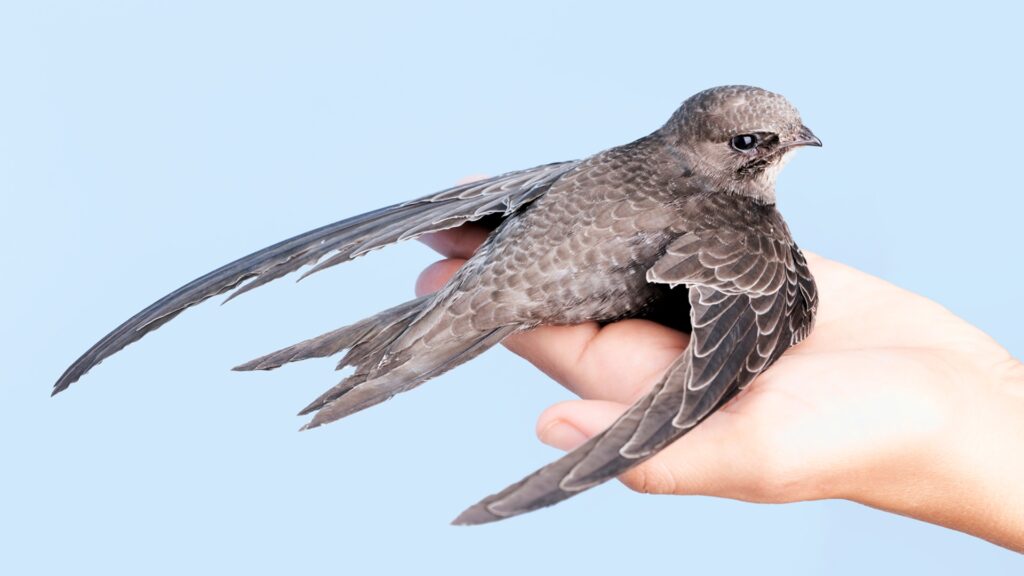
In the avian world, few feats are as astonishing as the prolonged flights of the common swift (Apus apus). Recent studies have unveiled that these diminutive birds can remain airborne for up to ten consecutive months without touching down.
This remarkable endurance not only sets a new record in the animal kingdom but also offers profound insights into avian physiology and behavior.
Size Doesn’t Matter
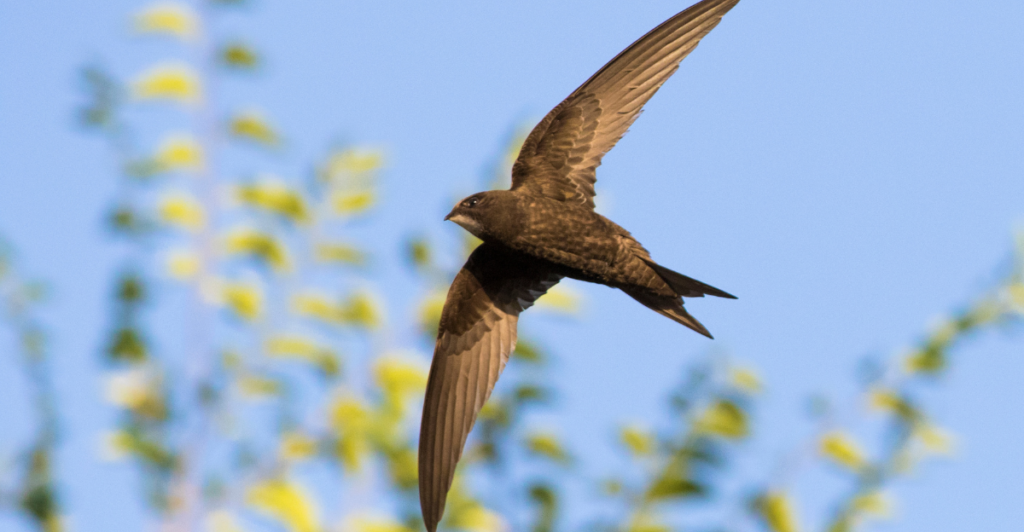
Understanding the common swift’s extraordinary capabilities challenges our perceptions of animal endurance and adaptation. Weighing merely 1.4 ounces (approximately 40 grams), these birds undertake intercontinental journeys, showcasing resilience and efficiency that continue to intrigue scientists and bird enthusiasts alike.
The Journey of a Lifetime

Every year, common swifts embark on a migration from their breeding grounds in Europe to sub-Saharan Africa. During this period, spanning approximately ten months, some individuals remain entirely airborne, feeding, mating, and possibly even sleeping on the wing.
This uninterrupted flight surpasses the previous record held by the alpine swift, which could stay aloft for up to 200 days.
Feeding on the Fly
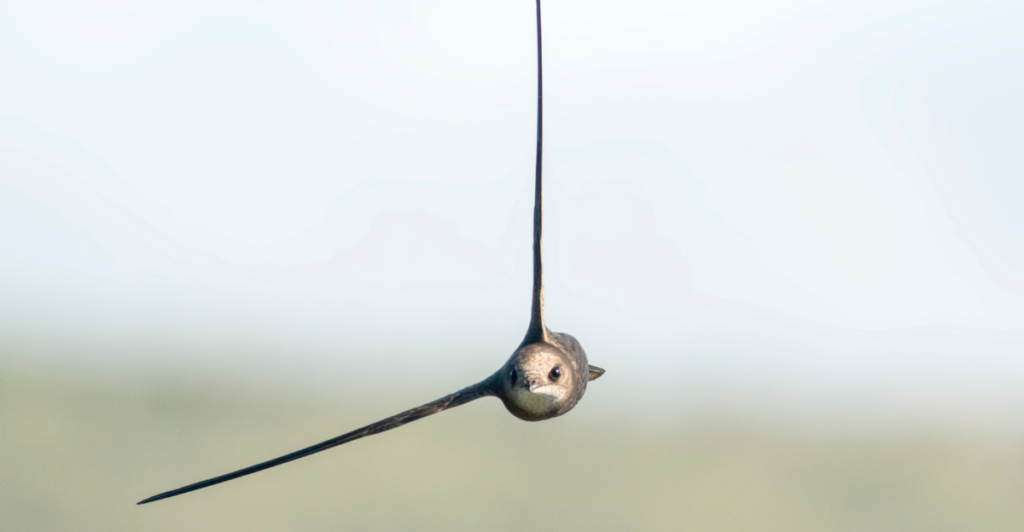
The primary diet of common swifts consists of aerial insects and spiders, collectively known as “aerial plankton.” Employing a feeding strategy termed “hawking,” these birds catch prey mid-flight with remarkable precision.
This continuous foraging method ensures they meet their nutritional needs without the necessity to land.
Sleeping in the Sky
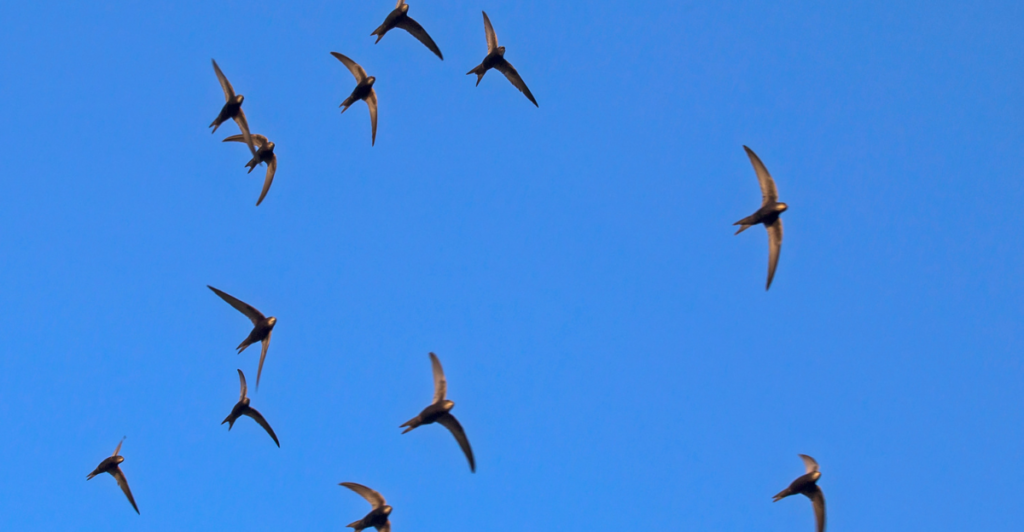
One of the most intriguing aspects of the common swift’s lifestyle is its ability to sleep while flying. Researchers hypothesize that swifts may engage in unihemispheric slow-wave sleep, allowing one hemisphere of the brain to rest while the other remains alert. Observations indicate that swifts ascend to altitudes of up to 10,000 feet during dawn and dusk, possibly facilitating restful gliding periods.
Molt on the Move
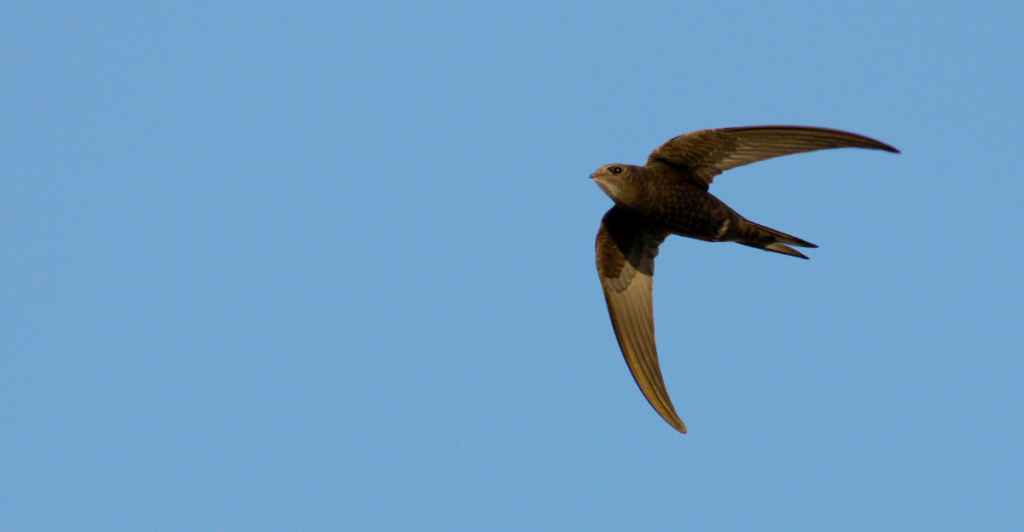
Unlike many bird species that undergo molting—a period of feather replacement—while grounded, common swifts have adapted to molt during flight. This continuous renewal of feathers ensures optimal flight efficiency and reduces the risk associated with prolonged ground time, where they are more vulnerable to predators.
Technological Breakthroughs in Tracking
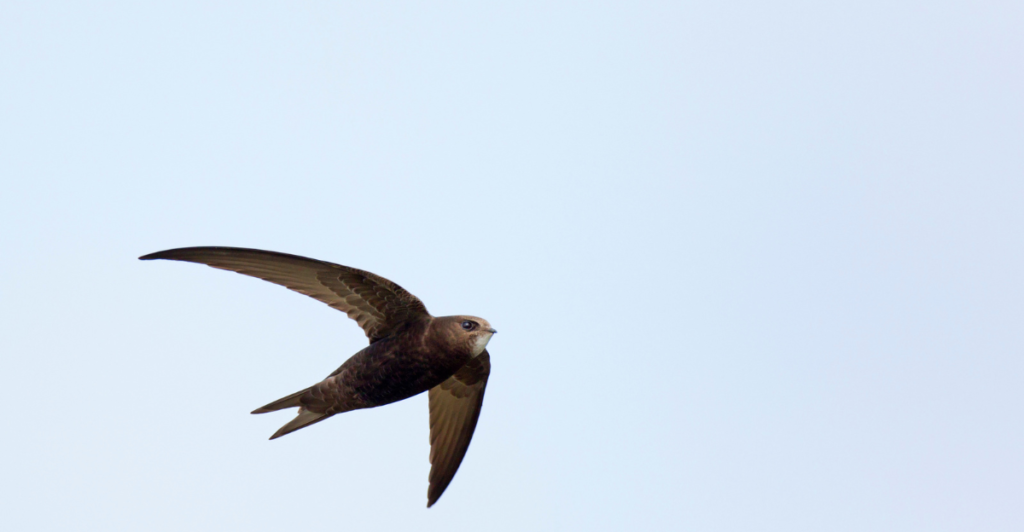
Advancements in miniaturized tracking technology have been pivotal in uncovering the common swift’s aerial habits. Researchers have utilized lightweight data loggers, weighing less than one gram, to monitor the movements and behaviors of these birds without hindering their natural activities.
These devices have provided unprecedented insights into their flight patterns and durations.
Implications for Avian Biology
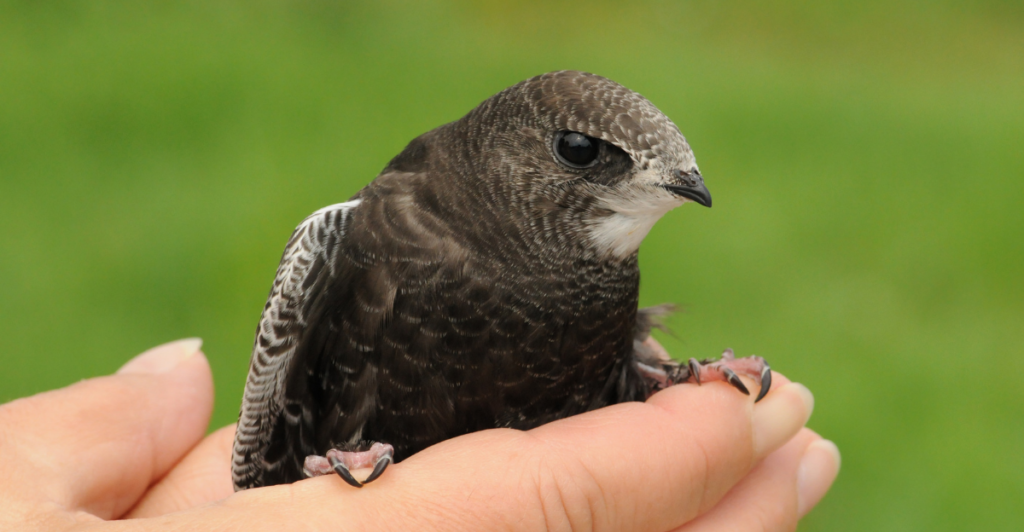
The discovery of the common swift’s prolonged flight has significant implications for our understanding of avian biology. It challenges existing notions about the physiological limits of flight endurance and energy management in birds. Moreover, it prompts further investigation into the mechanisms that enable such feats, including muscle maintenance, metabolic adaptations, and sleep regulation during sustained flight.
Conservation Considerations
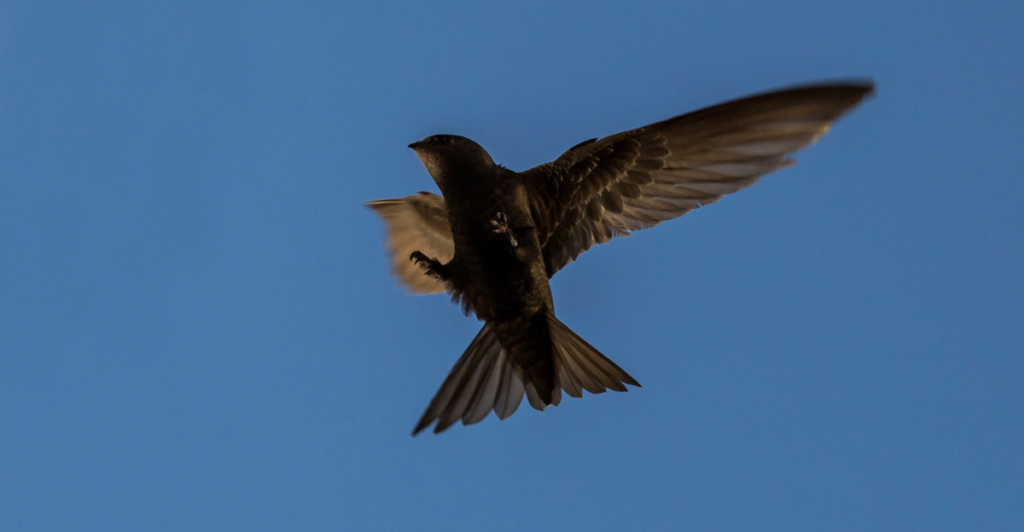
Recognizing the exceptional capabilities of common swifts underscores the importance of their conservation. As aerial insectivores, they play a crucial role in controlling insect populations. However, factors such as habitat loss, climate change, and declines in insect abundance pose threats to their populations. Conservation efforts must prioritize the protection of both their breeding and feeding habitats to ensure the survival of this remarkable species.
A Symbol of Adaptation

The common swift’s ability to remain airborne for extended periods exemplifies the incredible adaptability of wildlife. Their evolutionary innovations—ranging from aerodynamic body structures to efficient energy utilization—highlight the intricate relationship between organisms and their environments. Studying such species offers valuable lessons in resilience and adaptation.
Future Research Directions

While current research has shed light on many aspects of the common swift’s life, several questions remain. Future studies aim to explore the genetic basis of their endurance, the exact mechanisms of in-flight sleep, and the potential impacts of environmental changes on their migratory patterns. Continued technological advancements will undoubtedly facilitate deeper understanding in these areas.
Conserving The Swift
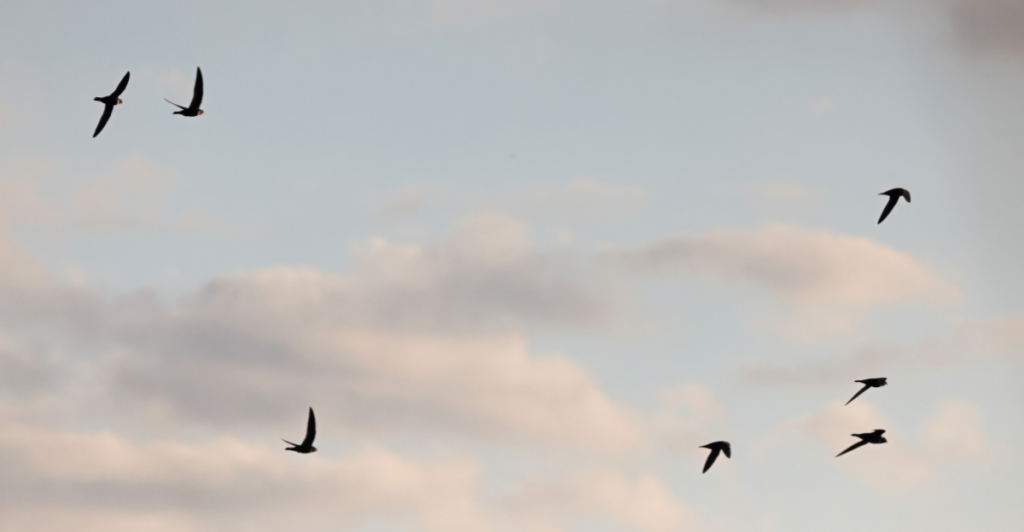
The common swift’s ten-month aerial journey stands as a testament to the marvels of natural adaptation and endurance. Their continuous flight challenges our understanding of biological limits and inspires a sense of wonder about the natural world. As we uncover more about their lives, we gain not only scientific insights but also a profound appreciation for the resilience of life on Earth.
We Can Help

In preserving the habitats and ecosystems that support such extraordinary creatures, we not only protect biodiversity but also ensure that future generations can marvel at the wonders of nature’s most resilient flyers.
Discover more of our trending stories and follow us to keep them appearing in your feed.

California Is Splitting Apart: A Fault Line Is Forming Faster Than Anyone Predicted
The 11 Heaviest Flying Birds in the World – Giants of the Sky
12 Biggest Birds on Earth – How Many Roam the U.S. Lands?
12 Genius Hacks to Keep Your Backyard Safe for Small Birds
References:
Treehugger
Vedantu
Stay connected with us for more stories like this! Follow us to get the latest updates or hit the Follow button at the top of this article, and let us know what you think by leaving your feedback below. We’d love to hear from you!







